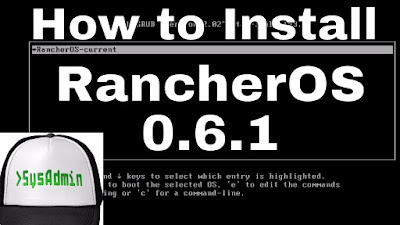 |
| RancherOS 0.6.1 Installation and Review on VMware |
This tutorial shows how to install RancherOS 0.6.1 to Hard Disk using VMware Workstation/Player step by step including generating SSH Key Pairs to connect to RancherOS.
RancherOS 0.6.1 Installation Steps:
- Download RancherOS 0.6.1 ISO
- Create VM on VMware Workstation/Player
- Boot RancherOS 0.6
- Create Cloud-Config.yml
- Generate SSH Key Pairs Using PuTTY
- Install RancherOS on Hard Disk
- Connect to RancherOS via SSH Client PuTTY using SSH Private Key
Installing RancherOS 0.6.1 to Hard Drive on VMware
What is RancherOS?
RancherOS is a tiny Linux distribution that runs the entire operating system as Docker containers. By running Docker directly on top of the kernel and delivering Linux services as containers, RancherOS delivers just what you need to build what you want. RancherOS includes only the bare minimum amount of software needed to run Docker. This keeps the binary download of RancherOS very small. Everything else can be pulled in dynamically through Docker. Like other minimalist Linux distributions, RancherOS boots incredibly quickly, generally in 5-10 seconds. Starting Docker containers is nearly instant, similar to starting any other process.RancherOS Website: http://rancher.com/rancher-os/
RancherOS 0.6.1 New Features and Improvements
RancherOS 0.6.1 is the latest stable version of the project's minimalist Linux distribution designed for running Docker containers. This version mainly contains bug fixes and enhancements. In addition to switching the default Docker version to 1.12.1 and kernel version to 4.4.21, the following features have been implemented. Better support for switching docker engines. It has always been part of the design of RancherOS to run two instances of Docker. The first is System Docker, which runs as PID 1 and is responsible for managing system services. The other, which we typically call User Docker or just Docker, is actually run as a container managed by System Docker. Starting with v0.6.0, the process for changing the User Docker container has been made much easier.Hope you found this RancherOS 0.6 installation and review tutorial helpful and informative. Please consider sharing it. Your feedback and questions are welcome!
0 comments:
Post a Comment